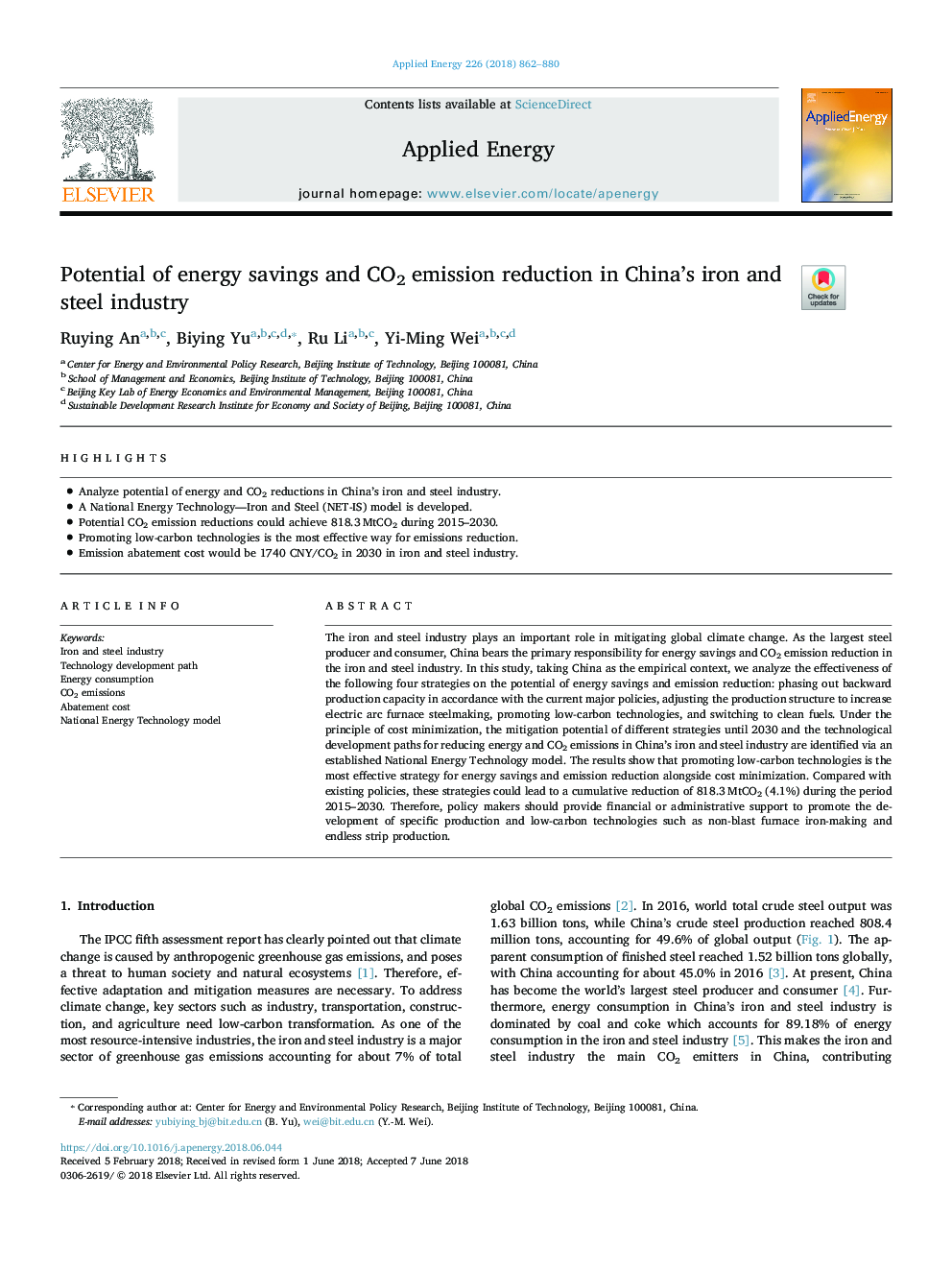| Article ID | Journal | Published Year | Pages | File Type |
|---|---|---|---|---|
| 6679803 | Applied Energy | 2018 | 19 Pages |
Abstract
The iron and steel industry plays an important role in mitigating global climate change. As the largest steel producer and consumer, China bears the primary responsibility for energy savings and CO2 emission reduction in the iron and steel industry. In this study, taking China as the empirical context, we analyze the effectiveness of the following four strategies on the potential of energy savings and emission reduction: phasing out backward production capacity in accordance with the current major policies, adjusting the production structure to increase electric arc furnace steelmaking, promoting low-carbon technologies, and switching to clean fuels. Under the principle of cost minimization, the mitigation potential of different strategies until 2030 and the technological development paths for reducing energy and CO2 emissions in China's iron and steel industry are identified via an established National Energy Technology model. The results show that promoting low-carbon technologies is the most effective strategy for energy savings and emission reduction alongside cost minimization. Compared with existing policies, these strategies could lead to a cumulative reduction of 818.3â¯MtCO2 (4.1%) during the period 2015-2030. Therefore, policy makers should provide financial or administrative support to promote the development of specific production and low-carbon technologies such as non-blast furnace iron-making and endless strip production.
Related Topics
Physical Sciences and Engineering
Energy
Energy Engineering and Power Technology
Authors
Runying An, Biying Yu, Ru Li, Yi-Ming Wei,
